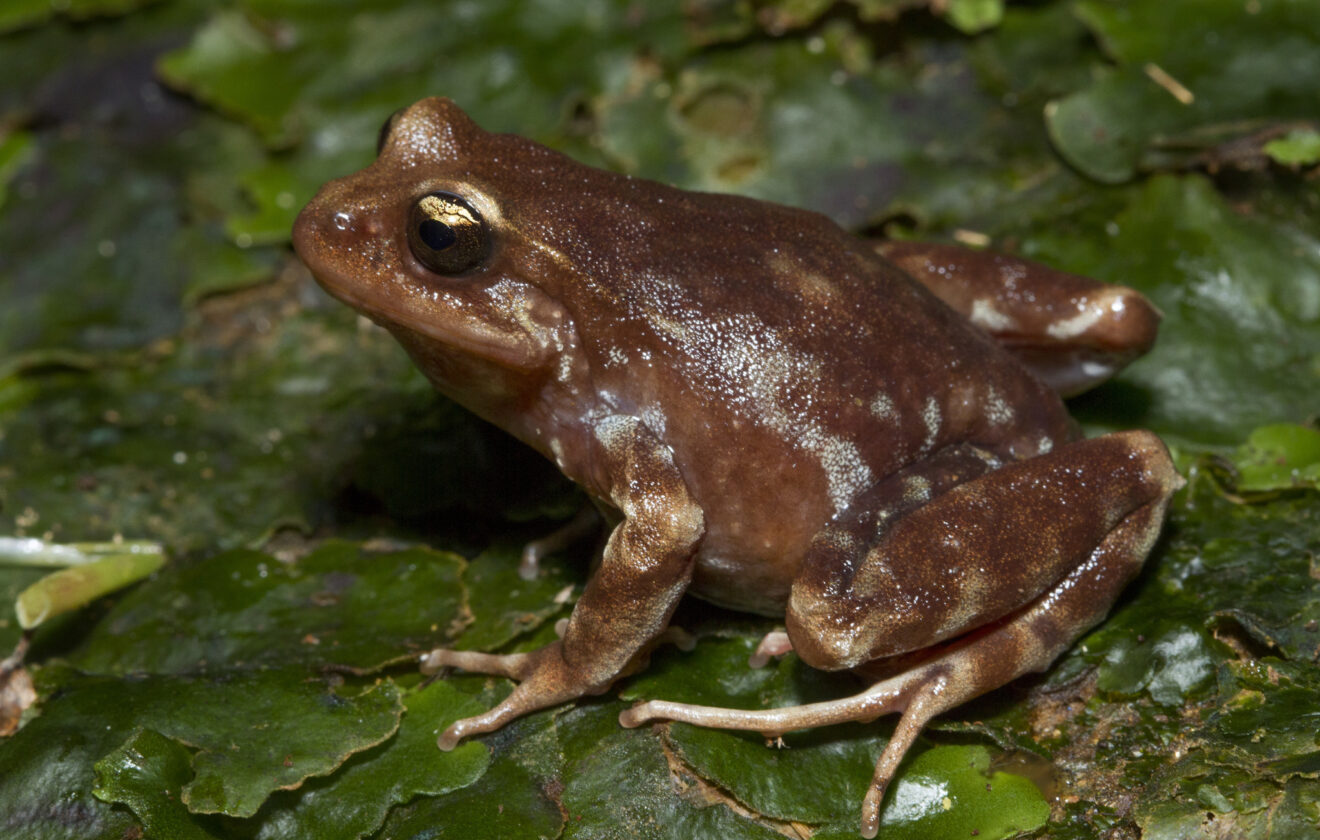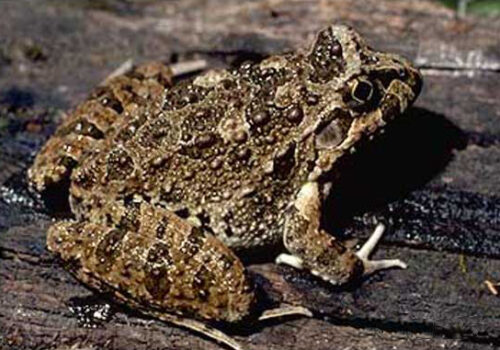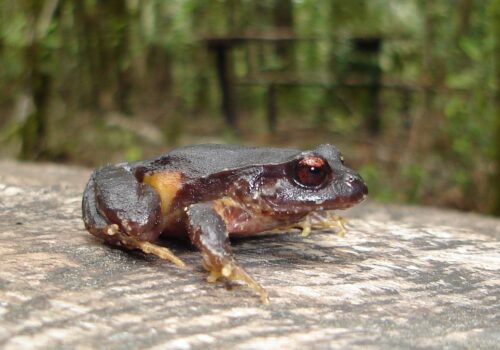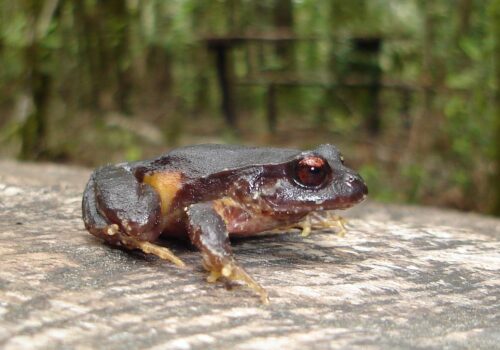- Eupsophus migueli: The Enigmatic Frogs of Chile's Temperate Rainforests
- Taxonomy and Classification: Understanding Eupsophus migueli’s Place in the Anuran World
- Natural Habitat: Beneath the Shadows of Chile's Temperate Rainforests
- Physical Characteristics: The Art of Camouflage and Survival
- Behavior and Life Cycle: Unique Parental Investment in the Amphibian World
- Ecological Role: Forest Guardians and Biological Indicators
- Threats and Conservation Status: Protecting Chile's Secretive Frog
- Cultural and Scientific Significance: An Amphibian Ambassador
- Conclusion: A Call to Protect an Enchanting Chilean Treasure
Eupsophus migueli: The Enigmatic Frogs of Chile’s Temperate Rainforests#
As twilight falls upon the temperate rainforests of southern Chile, a soft drizzle begins to patter gently upon the lush canopy. Moss-covered roots and decaying logs carpet the mystical forest floor, home to an array of creatures adapted to this humid, mysterious environment. Among the subtle symphony of nocturnal whispers emerges the quiet, distinctive croaking of a hidden amphibious resident: the Miguel’s Ground Frog (Eupsophus migueli).
The elusive and often overlooked Eupsophus migueli belongs to a peculiar group of amphibians uniquely adapted to the complexities of Chile’s temperate ecosystems. With its discretely patterned skin, cryptic demeanor, and surprising parental behaviors, this species embodies the profound ecological beauty—and vulnerability—of its specialized habitat.
Taxonomy and Classification: Understanding Eupsophus migueli’s Place in the Anuran World#
Scientifically recognized as Eupsophus migueli, Miguel’s Ground Frog belongs to the family Alsodidae, a lesser-known family closely related to better-studied families such as Leptodactylidae, commonly found in South America. Within the Alsodidae family, frogs of the genus Eupsophus show unique morphological adaptations and fascinating lifestyles adapted to moist, temperate microhabitats.
Discovered and scientifically described by Formas in 1978, Eupsophus migueli has close relatives in southern Chile, such as Eupsophus calcaratus and Eupsophus roseus, which share similar ecological niches yet maintain subtle differences in behavior, vocalizations, and habitat preferences. Understanding this intricate family tree shines a light on the evolutionary pathways forged by these forest frogs, revealing the careful balance of adaptation and specialization.
Natural Habitat: Beneath the Shadows of Chile’s Temperate Rainforests#
The story of Eupsophus migueli unfolds within the mesmerizing, mist-laden forests of south-central Chile, primarily in regions including Valdivia, Osorno, and Chiloé Island. This species favors humid, shaded habitats characterized by persistent moisture, moderate temperatures, and abundant leaf litter—critical elements sustaining their sensitive amphibian skin and delicate eggs.
A Secretive Forest Dweller#
Unlike more charismatic or photogenic species, Miguel’s Ground Frog thrives quietly, unseen beneath fallen logs, moist bark, and thick leaf deposits that carpet the forest floor. A shadowy environment keeps this species remarkably cryptic; individuals typically remain hidden from view beneath debris, emerging only during damp evenings and rainy periods to forage or breed.
This deliberate choice of habitat is not merely coincidental. Such spaces provide optimal environmental conditions to avoid predators, conserve moisture, and source abundant prey items. The dense, leafy floor offers a refuge from larger predators, while consistent humidity prevents dangerous dehydration.
Physical Characteristics: The Art of Camouflage and Survival#
Miguel’s Ground Frog is modestly sized, typically ranging from 30 to 40 millimeters in length—comparable to the length of a standard thumb. Despite its small stature, it showcases impressive adaptations essential for thriving in its humid niche.
The coloration of Eupsophus migueli varies subtly among individuals but primarily exhibits hues of brown, gray, and reddish-brown. Its cryptic patterning effectively mimics bark, damp leaves, and soil textures. Trailing irregular patterns along its back and limbs, this cryptic coloration becomes perfectly camouflaged against the complex ground-level mosaic of forest debris, significantly reducing detection by predators and prey alike.
The body’s slender yet robust form, complete with powerful hind legs, affords agile movements through the tangled understory. These frogs demonstrate remarkable facility in leaping short distances to evade threats or chase small invertebrates for food.
Behavior and Life Cycle: Unique Parental Investment in the Amphibian World#
One of the most captivating aspects of Miguel’s Ground Frog’s biology lies in its reproductive strategies. While frogs are often stereotyped as indifferent parents laying abundant batches of eggs, the genus Eupsophus, including Eupsophus migueli, shatters this perception with a remarkable display of attentive parental care.
Striking Courtship and Vocalizations#
During the rainy season, males lead the courtship dance with resonant, subtle calls—low-frequency notes echoing gently through the damp woodland. Unlike boisterous frogs from warmer bodies of water, Miguel’s Ground Frog emits quieter, infrequent croaks, perfectly blending into the forest’s nocturnal chorus. Females, drawn to these distinct signals, approach with care beneath the shelter of leaves.
Dedicated Parents beneath Leaf-Litter Nests#
Uniquely among amphibians, female Miguel’s Ground Frogs lay a modest clutch of eggs—usually fewer than twenty—concealed within moist soil cavities under leaf litter or rotting wood. Rather than abandoning them, males exhibit exceptional parental dedication, fiercely guarding the eggs from potential threats such as ants, beetles, and other small predators.
Upon hatching, the offspring bypass the typical aquatic tadpole stage seen in most frogs. Instead, the tiny froglets emerge fully developed—a survival adaptation perfect for forest floors lacking standing bodies of water. Parents escalate their defensive behaviors during hatchling development, a poignant example of parental investment rarely observed in other amphibian species.
Ecological Role: Forest Guardians and Biological Indicators#
Amphibians, including Miguel’s Ground Frog, occupy central roles within the intricate web of their ecosystems. As efficient predators of arthropods, such as ants, beetles, flies, and spiders, these frogs exert essential regulatory pressure, keeping populations of small invertebrates balanced. Conversely, they themselves are preyed upon by larger predators, including various birds, snakes, and mammals, positioning them as critical food sources within their ecological niche.
A Reflection of Ecological Health#
More significantly, the sensitivity of Miguel’s Ground Frog to environmental changes highlights its value as an indicator species. Amphibians have permeable skins absorbing substances from their surroundings, so they are particularly vulnerable to pollution, climate shifts, and habitat disturbances. Monitoring populations of species like Eupsophus migueli provides conservationists with crucial insights into wider ecological integrity.
Threats and Conservation Status: Protecting Chile’s Secretive Frog#
Currently classified by the International Union for Conservation of Nature (IUCN) as “Vulnerable,” Miguel’s Ground Frog faces increasing threats, prominently habitat destruction and environmental change. Deforestation driven by agriculture, logging, and human development reduces critical habitats, fragmenting forest landscapes vital for their survival.
Emerging Threats: Pathogens and Climate Change#
Further exacerbating threats come from emerging diseases, notably the chytrid fungus (Batrachochytrium dendrobatidis), known to cause declines in amphibian populations globally. Climate shifts altering rainfall patterns and temperature further complicate matters, as minor environmental variations can disrupt breeding and survival.
Fortunately, increased awareness has led to protective measures, such as habitat preservation initiatives in southern Chile, community-led monitoring programs, and ongoing scientific research aimed at understanding and safeguarding this unique species.
Cultural and Scientific Significance: An Amphibian Ambassador#
While slightly less known culturally than highly charismatic species, Miguel’s Ground Frog continues to captivate researchers exploring amphibian behavior, parental care evolution, and biodiversity in temperate ecosystems. Through their presence, these frogs represent broader conservation priorities and the profound value of habitats they represent.
Local folklore from indigenous Mapuche culture, though rarely specifically mentioning Eupsophus migueli, generally upholds frogs as symbols of fertility, recovery, and life renewal after rains—apt symbolism for these mysterious amphibians thriving in Chile’s wet forests.
Conclusion: A Call to Protect an Enchanting Chilean Treasure#
Eupsophus migueli, humble yet fascinating, evokes a deeper appreciation for the biodiversity found beneath the forest canopy. Its unique biology and ecology remind us of a critical truth—we must prioritize conservation efforts and recognize the complex relationships linking all life forms. Protecting habitats that sustain these remarkable frogs ensures we conserve not only their existence but also the integrity of the entire vibrant ecosystem.
Let us endeavor to learn more, contribute to habitat conservation, and secure a future where Miguel’s Ground Frog continues to thrive beneath Chile’s ancient forests.

















